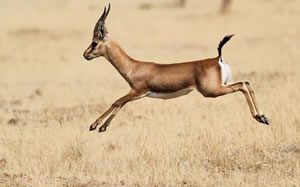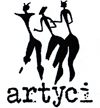 Written by_ Zuna Vesan 2017
Written by_ Zuna Vesan 2017
Translated by_Žubra Žubretovská 2021
Extracts from the upcoming book TAO OF MOVEMENT
Achilles tendon connects us with the Earth and builds our vertical. The Achilles tendon is the most important tendon for our walking, running and jumping, it is also important in terms of overall posture and in terms of our personal stability. We all surely know the myth of our weak spot. It talks about how Thetis, Achilles’ mother, wanted to turn her son into an invulnerable man, so as a child she submerged him in the Styx River. However, she held him by the heel, leaving this single place on his body dry, unwashed by the magical power of water. This later became fatal for him. The myth can be smiled at, but also thought about, because it contains information far beyond the dimension of Greek mythology. From an anatomical point of view, the Achilles tendon is our largest and strongest tendon. One has to strain it extremely to tear it apart. Its strength lies in its dense structure, but also in cooperation with other parts of the body. So let’s look at it from a Taoist point of view, which takes individual parts of the body as part of the whole, where everything is connected to everything and if something happens to one of them, the others react as well.
The Achilles tendon is part of a long chain of muscles that begin at the skull – the lower ridge of the nape of the neck. This chain includes the trapezius muscles (on the neck and back of the neck), sacrospinalis (erector spinea muscles), gluteus (gluteal muscle), hamstrings (posterior thigh muscles), gastrocnemius (superficial two-headed calf muscle) and soleus (deeper calf muscle). This chain of muscles is terminated by the Achilles tendon as it connects to the heel. The tendon and the heel are energetically and physically connected to the skull in this way. Our contact with the Earth, the “scanning” of the diversity of the surface we walk on, the ability to let our weight sink into the Earth, all get from the heel to the brain through this chain. The Achilles tendon connects us to the Earth and through this chain it also builds our vertical axis.
Awareness of this chain is very helpful in healing practice. It is a whole in which every muscle, every part of the chain cooperates with the other parts. The injury of one of them affects the others, and conversely, if when treating one part we pay attention also to the other parts, it will help the whole, as well as the damaged part. All the muscles of this chain and their attachments to the bones, ie the tendons, together support the stability of the spine in its vertical axis and fine-tune the symbiosis between the lower limbs and the spine during walking, running, dancing and other physical activities. The crest of the bone of the nape of the neck is connected with the so-called proprioceptors. The proprioceptive system monitors the situation of the body, its organs and structures. It is related to the ability of the nervous system to detect changes occurring in the muscles and inside the body through movement and muscular activity. It is necessary for proper coordination of movement, registration of changes in body position, muscle tone and the course of some reflexes. In addition, this chain is a storehouse of emotional and psychological stress.
With the Taoist eye, we find that from the point of view of the flow of Qi in the acupuncture meridians, this chain is very strikingly identical to the bladder channel mentioned in the previous chapter. It is the longest meridian of the body through which Qi flows through the body from the head to the feet. In this pathway, Qi lines the entire chain of muscles, tendons, ligaments and fascia, and the meridian acts as a distributor between the individual parts of the chain, but also as an informant about the state of Qi. The Qi passes the meridian through the Achilles tendon itself, so when there is some stress on the Achilles tendon, information about it spreads along the entire chain. Conversely, the condition of the other components of the chain will affect the condition of the Achilles tendon. Thus, in the case of Achilles tendon problems, it is appropriate to relax the whole body, for which the bladder channel is made.
We have to stretch the Achilles tendon extremely in order to tear it apart. If it breaks, it is a sign that we have overtaken all the possibilities and we are literally tearing ourselves to pieces. From a psychosomatic point of view, this is a situation where we draw our weakness into the game. We break down for a task and risk too much for it. But by rupturing it or tearing it, we suddenly get into reality. When Achilles tendon let go, it turns out that the activity, or some kind of record we are trying to achieve, is beyond our reach. The body serves a competitive mind, an ambitious or unconscious ego, which comes up with many unrealistic things. And so in time it ensures a long break for us. Taking care of our tendons, and not only the Achilles´s, literally prolongs the career of a mover.
Tendons and grace of movement
Tendons have another important role, especially for movers. This is a kind of ability of overall coordination and interconnection of individual parts of the body into a graceful whole. With well-functioning and working tendons, the body is more compact, more flexible, it acts as a coordinated whole, perfectly using the cooperation of all individual parts of the body into a whole. The more we cultivate our tendons, the more we give the body an interconnection, thanks to which the individual parts of the body cooperate with each other and together form a single, compact unit. When we talk about dancers, we come across different types. For some, the movement may be trained and the overall impression is more about disconnection, these dancers do not seem to feel the compactness of their body, their movement expression is choppy, incoherent, and it can literally disturb us when looking at them. They are trained in terms of technique, but something bothers us there. On the contrary, other dancers do not have to be trained in technique on a daily basis, but their movements are more complete, coordinated, more connected. This unification of the body helps the smooth movement, when fluency and grace become to some extent the style of the dancer. Such a thing can be seen at an animal – an antelope or some feline beast, where the fluidity and balance of individual parts of the body is perfect, no part of the body is trained more than the other. Most fast-running animals do not have massive and muscular legs, but on the contrary, they are slim and more sinewy. When we see an “antelope” or “tiger” on stage, it is a very pleasant and fascinating sight.
Everything moving in the body, but also the movement of the body itself, is significantly nourished by liver Qi. This is also related to our capacity value. Movement requires our capacity value and we have it available if liver Qi flows harmoniously and evenly. Decreased capacity is a typical symptom of liver Qi imbalance, pay attention to it. As well as exaggerated activity and tension, inability to cease and relax, disrupt movement and are a sign of imbalance. The liver is responsible for creating and maintaining a balanced relationship between tension and release – activity and relaxation.
Translation of this text is supported by Slovak Art Concil

